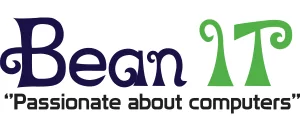Cyber Security Essentials: Privacy & Security Program and tools
Understanding cyber security can be a mine field, but rest assured, there are some basic steps you can take to ensure you’re accounting for privacy concerns and compliance issues, while building a culture of good cybersecurity.
Privacy Program: Safeguard your Data
- Internal Privacy Policy: Protect your business by establishing an internal privacy policy that covers employee records, email and internet usage, client/customer data, internal systems and access, mobile devices, and compliance with relevant laws and regulations. Don’t forget to outline the consequences for policy violations. If you don’t have a public-facing privacy policy, now is the time to implement one!
- Train Employees: Once your privacy policy is in place, educate your staff on its contents. Ensure they understand their responsibilities in safeguarding sensitive information and maintaining privacy standards.
- Data Retention Policy: Minimize the impact of a data breach by implementing a policy that governs how you retain and store data. By establishing controls and measures to secure data, your overall security is enhanced.
Security Program: Strengthen your Defences
- Security Awareness Training: Equip your employees and contractors with the knowledge they need to identify and respond to potential cybersecurity threats. Online security training courses offer tailored content to address physical and digital threats.
- Phishing Awareness Training: Combat one of the most prevalent threats by using a service that conducts random tests to assess employees’ ability to identify phishing emails. Identify areas that require additional training and reinforce your defence against cyber attacks.
- Clean Desk Policy: Mitigate the risk of sensitive information falling into the wrong hands by implementing a clean desk policy. Ensure your workforce stores documents securely when away from their desks, safeguarding confidential data and maintaining your company’s integrity.
- Visitor Program: Protect your employees, clients, physical assets, and important data by establishing a clear visitor policy and escort program. Tailor the policy to suit your office and workspace, considering factors such as size, location, and type of visitors.
- Identify Digital Assets: Conduct an annual risk assessment to evaluate your digital assets, identify vulnerabilities, and assess the potential risks and impact on your business. Stay proactive and ensure your security measures are up to date.
Tools: Arm Yourself with Powerful Solutions
- Multi-Factor Authentication (MFA): an electronic authentication method which provides a user access to a website or application only once two or more pieces of evidence have been presented.
- Virtual Private Network (VPN): Connect remote devices or workers securely to your organisation’s private network using encryption. A VPN creates a secure tunnel within the public network, safeguarding data from eavesdroppers.
- Secure Wi-Fi / Wireless Networking: Be sure to change default router settings, set up appropriate security measures, update firmware, and create a guest network. Protect your data and ensure the security of critical business systems.
- Secure Email Gateway (SEG): Emails are a common target for hackers seeking access to sensitive company data. Implement an SEG to enhance email security and protect against modern sophisticated attacks.
- System Auditing: Enable logging and deploy a firewall solution to monitor and identify potential security breaches or ongoing attacks. Regularly review logs and patterns to stay one step ahead of cyber threats.
- Backup Solution: Implement a reliable 3-2-1 backup solution for your data, ensuring you have multiple copies stored securely including off-site backup. Regularly test your backups and verify that your restoration procedure is effective to minimize data loss in the event of an incident.
- Domain Name System (DNS) and Content Filtering: Use DNS-based content filtering to control web usage and block high-risk sites known to harbour malware. Extend this protection to remote workers by installing an agent on their devices.
- Endpoint Detection and Response (EDR): Bolster your security with EDR technology. Continuously monitor and respond to advanced threats, even outside traditional working hours, to ensure comprehensive protection for your endpoints.
- Security Incident and Event Management (SIEM): the ability to correlate activity across multiple devices. Aids security analysts to search for and identify potential malicious activity.
Bean IT tailor solutions to match your business needs. Contact us to maximise your Cyber Protection.
Email: info@beanit.co.uk or call 0121 667 8977 and let’s embark on a secure digital journey together!




Leave a Reply
Want to join the discussion?Feel free to contribute!